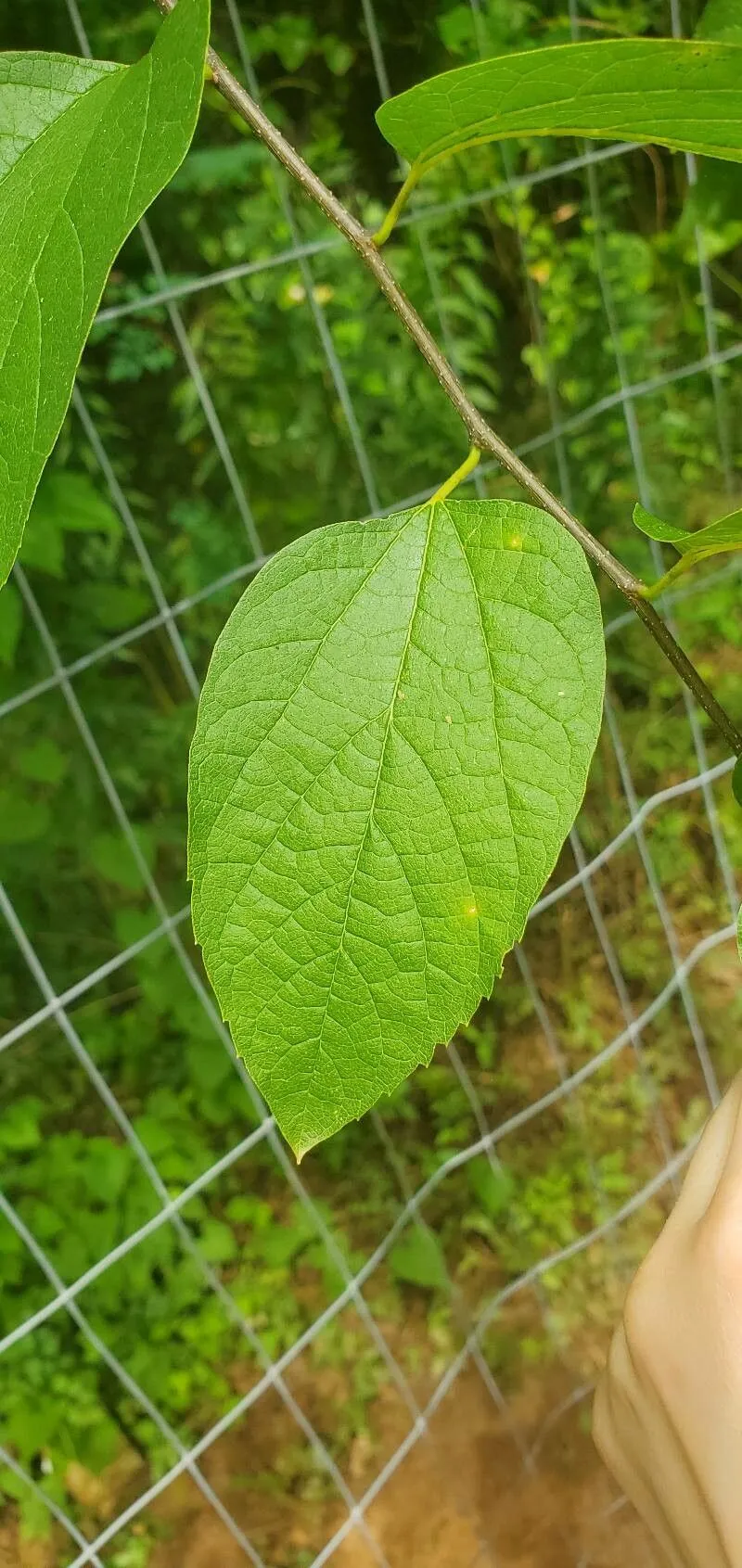
Author: Nutt.
Bibliography: Gen. N. Amer. Pl. 1: 202 (1818)
Year: 1818
Status: accepted
Rank: species
Genus: Celtis
Vegetable: False
Observations: SE. Canada to C. & E. U.S.A.
Dwarf hackberry, scientifically known as Celtis tenuifolia, is a small to medium-sized deciduous tree belonging to the Cannabaceae family. This resilient species finds its native habitat stretching from southeastern Canada through central and eastern United States, showcasing adaptability across a broad range of climates and soils.
Standing out for its modest stature, the dwarf hackberry typically adorns itself with a rounded crown and slender branches. The foliage consists of smooth, oval-shaped leaves with finely toothed margins, each leaf contributing to the dense canopy that provides an excellent shelter for various birds and small mammals. The tree’s bark, often gray to light brown with corky ridges, adds a distinctive texture, making it a visually interesting specimen in natural landscapes.
Flowers of the dwarf hackberry are relatively inconspicuous, often appearing as small, greenish clusters in early spring. Post-pollination, they give way to drupes; these small, sweet berries progress in color from orange to dark purple as they mature over the summer months, gaining the appreciation of wildlife for their taste and nutritional value.
In terms of ecological benefits, Celtis tenuifolia plays a pivotal role. The tree offers habitat and sustenance to numerous wildlife species, while its deep root system helps in soil stabilization, making it an excellent choice for land rehabilitation projects. Its resilience against drought and poor soil conditions further exemplifies its hardiness and adaptability.
Historically, the dwarf hackberry was first documented in 1818, as noted by Nutt. in “Gen. N. Amer. Pl. 1: 202,” capturing the attention of botanists and plant enthusiasts of that era. Despite its humble appearance, this tree carries significant ecological importance and has become a subject of interest for its ability to thrive in varied and sometimes harsh environments.
In conclusion, Celtis tenuifolia or the dwarf hackberry, is a remarkable tree that exemplifies resilience and ecological value. From sheltering wildlife to stabilizing soils, this modest tree proves to be an indispensable component of its native ecosystems across southeastern Canada and the central and eastern United States.
Eng: georgia hackberry, dwarf hackberry, upland hackberry
Fra: micocoulier rabougri, micocoulier de géorgie, micocoulier de soper
En: Dwarf hackberry, Small’s hackberry, Georgia hackberry, Upland hackberry
Ar: ميس نحيل الأوراق
Fr: Micocoulier rabougri, Micocoulier de Géorgie, Micocoulier de Soper
Taken Oct 27, 2021 by Bogdan Huza (cc-by-sa)
Taken May 10, 2022 by Tim Arnold (cc-by-sa)
Taken Oct 27, 2021 by Bogdan Huza (cc-by-sa)
Taken May 18, 2022 by Anna Sokolsky (cc-by-sa)
Taken Sep 4, 2022 by L b (cc-by-sa)
Taken Sep 22, 2022 by Cristina Gaspar Marques (cc-by-sa)
Taken Jul 22, 2022 by Cristina Gaspar Marques (cc-by-sa)
Taken Jan 1, 1900 by EOL − Gerrit Davidse (cc-by-nc-sa)
Taken Jan 1, 1900 by EOL − Gerrit Davidse (cc-by-nc-sa)
Taken Sep 15, 2010 by Photoflora – Jean-Luc TASSET (©)
Taken Sep 15, 2010 by Photoflora – Jean-Luc TASSET (©)
Taken Sep 15, 2010 by Photoflora – Jean-Luc TASSET (©)
© copyright of the Board of Trustees of the Royal Botanic Gardens, Kew.
© copyright of the Board of Trustees of the Royal Botanic Gardens, Kew.
© copyright of the Board of Trustees of the Royal Botanic Gardens, Kew.
Family: Myrtaceae Author: (F.Muell.) K.D.Hill & L.A.S.Johnson Bibliography: Telopea 6: 402 (1995) Year: 1995 Status:…
Family: Rubiaceae Author: Pierre ex A.Froehner Bibliography: Notizbl. Bot. Gart. Berlin-Dahlem 1: 237 (1897) Year:…
Family: Sapindaceae Author: Koidz. Bibliography: J. Coll. Sci. Imp. Univ. Tokyo 32(1): 38 (1911) Year:…
Family: Asteraceae Author: A.Gray Bibliography: Pacif. Railr. Rep.: 107 (1857) Year: 1857 Status: accepted Rank:…
Family: Fabaceae Author: Medik. Bibliography: Vorles. Churpfälz. Phys.-Ökon. Ges. 2: 398 (1787) Year: 1787 Status:…
Family: Aspleniaceae Author: (Cav.) Alston Bibliography: Bull. Misc. Inform. Kew 1932: 309 (1932) Year: 1932…